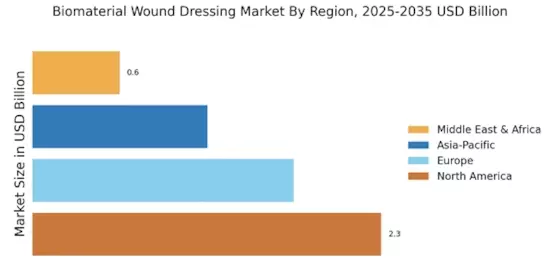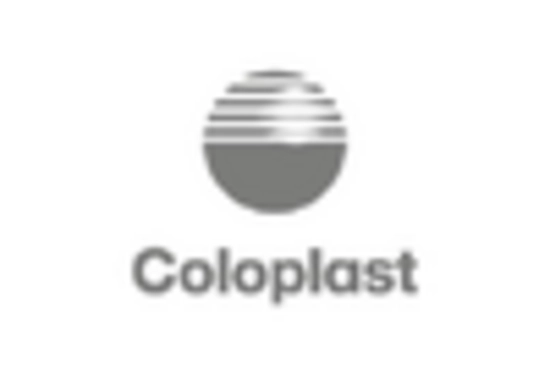The Biomaterial Wound Dressing Market is characterized by a dynamic competitive landscape, driven by innovation, technological advancements, and an increasing demand for effective wound care solutions. Key players such as Smith & Nephew (GB), Mölnlycke Health Care (SE), and 3M (US) are actively shaping the market through strategic initiatives that emphasize product development and regional expansion. Smith & Nephew (GB) has focused on enhancing its product portfolio with advanced biomaterials, while Mölnlycke Health Care (SE) has prioritized sustainability in its manufacturing processes. Meanwhile, 3M (US) is leveraging its extensive research capabilities to introduce innovative wound care products, thereby reinforcing its market position. Collectively, these strategies contribute to a competitive environment that is increasingly centered on technological differentiation and customer-centric solutions.
In terms of business tactics, companies are increasingly localizing manufacturing to enhance supply chain efficiency and reduce lead times. This approach appears to be particularly relevant in the context of the Biomaterial Wound Dressing Market, which is moderately fragmented, with several players vying for market share. The collective influence of these key players is significant, as they not only drive innovation but also set industry standards that smaller companies must adhere to in order to remain competitive.
In August 2025, Johnson & Johnson (US) announced a strategic partnership with a leading technology firm to integrate artificial intelligence into its wound care product line. This collaboration aims to enhance patient outcomes through personalized treatment plans, indicating a shift towards data-driven healthcare solutions. The strategic importance of this move lies in its potential to position Johnson & Johnson (US) as a leader in the integration of technology within the wound care sector, thereby attracting a tech-savvy consumer base.
In September 2025, B. Braun Melsungen AG (DE) launched a new line of biodegradable wound dressings, reflecting a growing trend towards sustainability in healthcare. This initiative not only aligns with global environmental goals but also caters to an increasingly eco-conscious consumer market. The introduction of biodegradable options may enhance B. Braun's competitive edge, as it addresses both regulatory pressures and consumer preferences for sustainable products.
In October 2025, Convatec (GB) unveiled a digital platform designed to streamline the management of chronic wounds, which integrates telehealth capabilities. This strategic move underscores the importance of digital transformation in the healthcare sector, particularly in wound management. By offering a comprehensive digital solution, Convatec (GB) positions itself as a forward-thinking player, likely to attract healthcare providers seeking efficient and effective wound care management tools.
As of October 2025, the competitive trends within the Biomaterial Wound Dressing Market are increasingly defined by digitalization, sustainability, and the integration of artificial intelligence. Strategic alliances are becoming more prevalent, as companies recognize the value of collaboration in enhancing their technological capabilities. Looking ahead, it is anticipated that competitive differentiation will evolve from traditional price-based competition to a focus on innovation, advanced technology, and supply chain reliability, thereby reshaping the market landscape.


















Leave a Comment